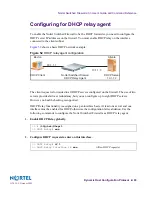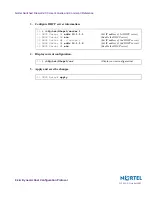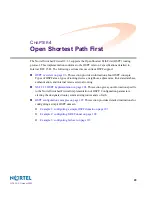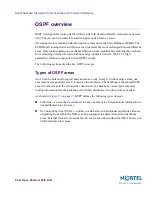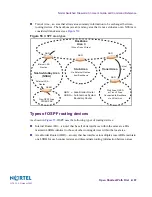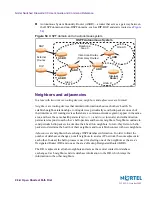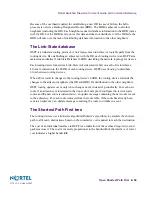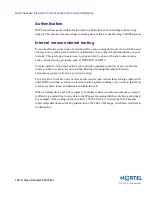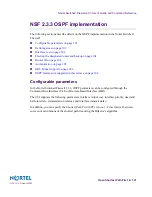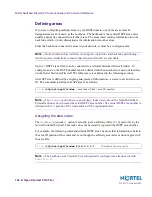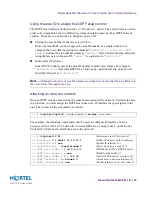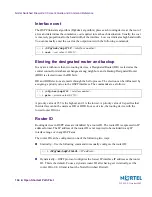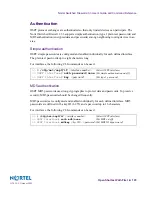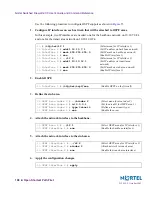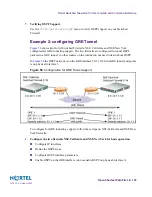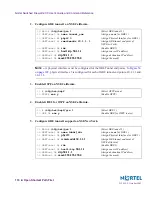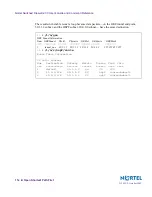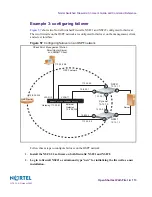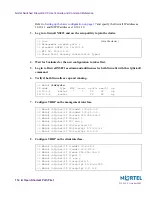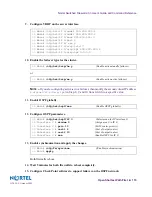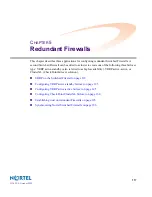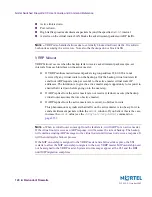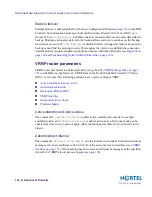
Nortel Switched Firewall 2.3.3 User’s Guide and Command Reference
Open Shortest Path First
107
213455-L, October 2005
OSPF configuration examples
A summary of the basic steps for configuring OSPF on the Nortel Switched Firewall is listed
here. Detailed instructions for each of the steps is covered in the following sections:
1.
Configure IP interfaces.
One IP interface is required for each desired network (range of IP addresses) being assigned to
an OSPF area on the Nortel Switched Firewall.
2.
Enable OSPF on the Nortel Switched Firewall.
3.
Define the OSPF areas.
4.
Configure OSPF interface parameters.
IP interfaces are used for attaching networks to the various areas.
Example 1: configuring a simple OSPF domain
In this example, two OSPF areas are defined—one area is the backbone and the other is a
transit area. A transit area does not allow advertisements of external routes, thus reducing the
size of the database. Instead, a default summary route of IP address 0.0.0.0 is automatically
inserted into the transit area. Any traffic for IP address destinations outside the transit area are
forwarded to the transit area IP interface, and then into the backbone.
Figure 55
A simple OSPF domain
Area 0
(0.0.0.0)
IF 1
10.10.7.1
IF 2
10.10.12.1
Area 1
(0.0.0.1)
Backbone
Stub Area
Network
10.10.7.0/24
Network
10.10.12.0/24

